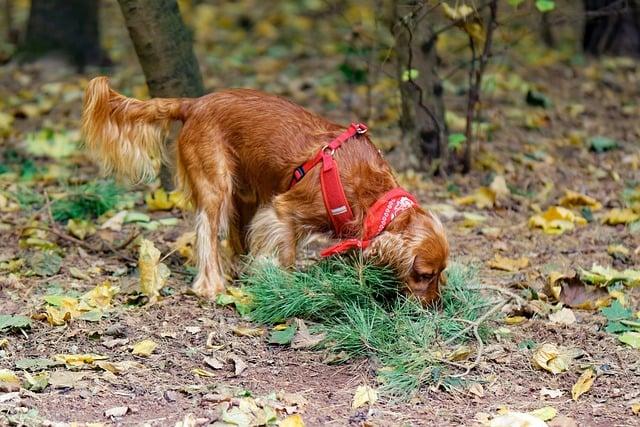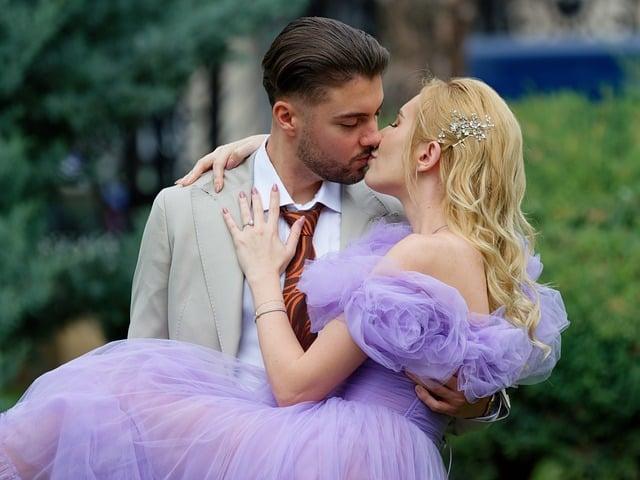Imagine a sunny afternoon in a bustling park, where a golden retriever named Max is happily playing fetch. As his owner approaches, arms wide open for a warm hug, Max freezes, tail tucked. While many humans express love through embraces, not all dogs share this sentiment. Research shows that many dogs feel confined and anxious when hugged. Instead, they thrive on gentle petting and playful interactions. Understanding their body language can foster a deeper bond. So, let’s show our furry friends love in ways they truly appreciate!
Contents
- Understanding Canine Body Language and Affection
- The Psychological Impact of Hugs on Dogs
- Best Practices for Hugging Your Dog Safely
- Alternatives to Hugs for Strengthening Your Bond with Your Dog
- Q&A
Understanding Canine Body Language and Affection
Understanding how dogs communicate through their body language is crucial for interpreting their feelings and comfort levels. When it comes to physical affection, such as hugging, dogs may not respond in the same way humans do. Their body language can reveal a lot about their emotional state. For instance, a dog that leans into you, maintains a relaxed posture, and has a wagging tail is likely enjoying the interaction. In contrast, a dog that turns its head away, tucks its tail, or shows signs of stress, such as panting or yawning, may not appreciate being hugged.
Many dogs have individual preferences when it comes to physical touch. While some may revel in the closeness of a hug, others might feel confined or anxious. Observing your dog’s reactions can help you gauge their comfort level. Signs of enjoyment can include:
- Relaxed ears – Ears in a neutral position indicate comfort.
- Soft eyes – A relaxed gaze suggests your dog feels safe.
- Wagging tail – A loose, wagging tail is often a sign of happiness.
Conversely, if your dog displays signs of discomfort, it’s essential to respect their boundaries. Dogs communicate their feelings through subtle cues, and ignoring these can lead to stress or anxiety. Signs that your dog may not enjoy being hugged include:
- Stiff body posture – A rigid stance can indicate tension.
- Averted gaze – Looking away is a sign of discomfort.
- Growling or barking – Vocalizations can indicate distress.
Ultimately, the key to fostering a loving relationship with your dog lies in understanding their unique personality and preferences. Instead of hugging, consider alternative ways to show affection that align with your dog’s comfort level. Activities such as gentle petting, playing with their favorite toy, or simply sitting close can strengthen your bond without causing stress. By being attuned to your dog’s body language, you can create a nurturing environment that respects their needs and enhances your connection.
The Psychological Impact of Hugs on Dogs
Hugs are often seen as a universal sign of affection, but when it comes to our canine companions, the psychological effects can be quite complex. Dogs, being social animals, thrive on physical touch and emotional connection. However, the way they interpret hugs can vary significantly from one dog to another. For some, a hug can evoke feelings of comfort and security, while for others, it may induce stress or anxiety. Understanding these nuances is crucial for fostering a positive relationship with our pets.
Research has shown that physical affection, including hugs, can lead to the release of oxytocin, often referred to as the “love hormone.” This hormone plays a vital role in bonding and can enhance feelings of trust and safety between dogs and their owners. When a dog feels secure in a loving environment, they are more likely to exhibit positive behaviors such as wagging their tails, seeking closeness, and displaying relaxed body language. This positive reinforcement can strengthen the emotional bond between the dog and its owner.
However, it’s essential to recognize that not all dogs respond positively to being hugged. Some may feel trapped or restrained, leading to discomfort or even aggression. Signs that a dog may not appreciate being hugged include:
- Turning their head away
- Flattening their ears
- Showing the whites of their eyes
- Attempting to escape or move away
Being attuned to these signals is vital for ensuring that our interactions are enjoyable for our furry friends. Instead of traditional hugs, consider alternative forms of affection that many dogs find more comforting, such as gentle petting, belly rubs, or simply sitting close to them. These actions can provide the same emotional benefits without the potential stress that a hug might cause.
Ultimately, is a reflection of their individual personalities and past experiences. By observing their reactions and respecting their boundaries, we can create a nurturing environment that promotes their well-being. Engaging in positive interactions tailored to each dog’s preferences not only enhances their emotional health but also deepens the bond we share with them. Understanding and adapting to their needs is the key to a harmonious relationship, ensuring that our expressions of love are met with joy rather than discomfort.
Best Practices for Hugging Your Dog Safely
When it comes to showing affection to your furry friend, it’s essential to do so in a way that makes them feel comfortable and secure. Dogs, like humans, have their own preferences and boundaries. To ensure that your dog enjoys the experience, consider the following guidelines:
- Observe Body Language: Pay close attention to your dog’s body language. Signs of discomfort may include stiffening, turning away, or trying to escape. If your dog shows any of these signs, it’s best to respect their space.
- Approach Calmly: Before initiating a hug, approach your dog calmly and allow them to come to you. This helps them feel in control and more at ease with the interaction.
- Use Gentle Touch: When you do hug your dog, keep it gentle and brief. A light embrace around their shoulders or a soft petting motion can convey affection without overwhelming them.
- Incorporate Positive Reinforcement: Use treats or praise during and after the hug to create a positive association. This can help your dog learn to enjoy the experience over time.
It’s also important to recognize that not all dogs are the same. Some breeds are more tolerant of physical affection, while others may prefer a different way of bonding. Understanding your dog’s unique personality can help you tailor your approach:
- Know Your Breed: Certain breeds, such as Golden Retrievers and Labradors, are often more affectionate and may enjoy hugs more than others. Research your dog’s breed traits to better understand their comfort levels.
- Consider Their Past Experiences: A dog’s history can significantly influence their behavior. If your dog has had negative experiences with being hugged or handled, they may be more apprehensive. Take time to build trust.
- Engage in Alternative Affection: If your dog isn’t a fan of hugs, explore other ways to show love, such as playing, grooming, or simply sitting close to them. These activities can strengthen your bond without causing stress.
Lastly, always remember that safety is paramount. While your intentions may be loving, it’s crucial to ensure that your dog feels safe and secure during any interaction. Here are some additional tips to keep in mind:
- Limit the Duration: Keep hugs short and sweet. Prolonged hugging can lead to discomfort, so aim for a few seconds at a time.
- Be Mindful of Their Mood: If your dog is tired, anxious, or in a playful mood, they may not be receptive to hugs. Choose the right moment to express your affection.
- Teach Children Proper Interaction: If you have children, educate them on how to interact with dogs safely. Encourage gentle petting and discourage tight hugs that may make the dog feel trapped.
Alternatives to Hugs for Strengthening Your Bond with Your Dog
While hugs may seem like a natural way to express affection, many dogs may not appreciate this gesture as much as we do. Instead, consider alternative methods to deepen your connection with your furry friend. These approaches can foster trust and enhance your bond without the potential discomfort that a hug might cause.
One effective way to strengthen your relationship is through **positive reinforcement training**. This method not only teaches your dog new commands but also builds a sense of teamwork and communication. Use treats, praise, and playtime as rewards for good behavior, creating a positive association with your presence. Over time, your dog will learn to look to you for guidance, reinforcing your bond.
Engaging in **interactive play** is another fantastic alternative. Activities like fetch, tug-of-war, or hide-and-seek can be incredibly rewarding for both you and your dog. These games stimulate your dog mentally and physically, allowing for shared joy and excitement. The laughter and energy exchanged during playtime can create lasting memories and strengthen your emotional connection.
Lastly, consider incorporating **calm, quality time** into your routine. Simply sitting together, allowing your dog to rest against you, or gently petting them can be incredibly soothing. This quiet companionship fosters a sense of security and love, showing your dog that they are valued. By being present and attentive, you can cultivate a deeper bond that transcends the need for physical hugs.
Q&A
-
Do all dogs enjoy being hugged?
No, not all dogs enjoy being hugged. While some dogs may seek out physical affection, others may feel restrained or anxious when hugged. It’s essential to understand your dog’s individual personality and body language to determine their comfort level.
-
What signs indicate a dog is uncomfortable with hugs?
Signs of discomfort in dogs can include:
- Turning their head away
- Flattening their ears
- Showing the whites of their eyes
- Whining or growling
- Trying to escape or move away
Recognizing these signs is crucial for ensuring your dog’s well-being.
-
Can hugging be beneficial for dogs?
In some cases, gentle hugging can be beneficial for dogs that enjoy it. It can foster a sense of security and strengthen the bond between the dog and owner. However, it’s vital to ensure that the dog is comfortable and relaxed during the interaction.
-
What alternatives can I use to show affection to my dog?
If your dog does not enjoy hugs, consider these alternatives:
- Petting and stroking
- Playing interactive games
- Offering treats or toys
- Spending quality time together
These methods can effectively convey love and affection without causing discomfort.
while many dogs may tolerate hugs, it’s essential to respect their individual preferences. Understanding canine body language can foster a deeper bond. Prioritize your dog’s comfort to ensure a loving and trusting relationship.

大家好,我是彼得潘,專業的手法身體治療師。我喜歡探索和研究各種主題,並透過與人工智慧的合作分享專業、實用、有趣的文章。我們定期進行人工審核,以確保內容的準確性。如果您發現文章中有任何不準確的地方,請隨時與我們聯繫,我們會及時糾正。您可以透過 [email protected] 與我們聯繫。



